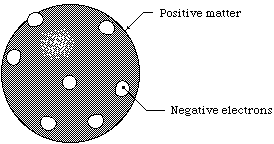Lab- 5B
Objective:
1. To observe a variety of chemical reaction
2. To interpret and explain observations with balanced chemical equations
3. To classify each reaction as one of the four main types
Reaction 1:
Adjust a burner flame to high heat.
Using crucible tongs, hold a 6cm length of bore copper wire in the hottest part of the flame for a few minutes
Changes during: it starts to change color
Changes after: it turns to black
Equation- Cu+O2 à 2CuO (synthesis)
Reaction 2:
Clean an iron nail with a piece of steel wool so the surface of the nail is shiny
Place the nail in a test tube and add copper (II) sulfate solution so that one half of the nail is covered
After approximately 15 mins, remove the nail and note any changes in both the nail and the solution
Changes during: liquid starts to turn green and bubbles all over the nail
Changes after: liquid becomes green
Equation- 3CuSO4 +2Fe à Fe2 (SO4) + 3Cu (single replacement)
Reaction 3:
Put some solid copper (II) sulfate pentahydrate in a test tube so that it is 1/3 full
Using the test tube clamp to hold test tube, heat the test tube, moving it back and forth gently over burner flame
Continue until there’s no further change is observed
Changes during: smoke appear
Changes after: It turns white
Equation- CuSO4 .5H2Oà CuSO4 +5H2O (decomposition)
Reaction 4:
Allow the test tube contents from reaction 3 to cool
Use medicine dropper to add 2 or 3 drops of water
Changes during: change color, heated
Changes after: turns black to blue
Equation- CuSO4 +5H2Oà CuSO4 .5H2O (synthesis)
Reaction 5:
Allow the test tube one quarter with calcium chloride solution. Fill a second test tube one quarter full with sodium carbonate solution
Pour the calcium chloride solution into the test tube containing sodium carbonate solution
Changes during: smoke it’s a fast reaction, turn white after added together
Changes after: white solid and becomes milky
Equation- CaCl2 (aq) +Na2CO3 (aq)à 2NaCl2aq) +CaCO3(s) (double replacement)
Reaction 6:
Place a piece of mossy zinc in a test tube
Add hydrochloric acid solution to the test tube until the mossy zinc is completely covered
Changes during: zinc starts to get less, bumbles starts to appear
Changes after: zinc disappears, liquid turns a little white
Equation- 2HCl+Znà ZnCl2+H2 (single replacement)
Reaction 6:
Half fill as a test tube with hydrogen peroxide solution.
Add a small amount of manganese (IV) oxide
Test the evolved by placing a glowing splint into the mouth of the test tube
Changes during: Bubbles occurs
Changes after: the blowing splints burning again
Equation- 2H2Oà(MnO2) 2H2O+ O2 (decomposition)
































